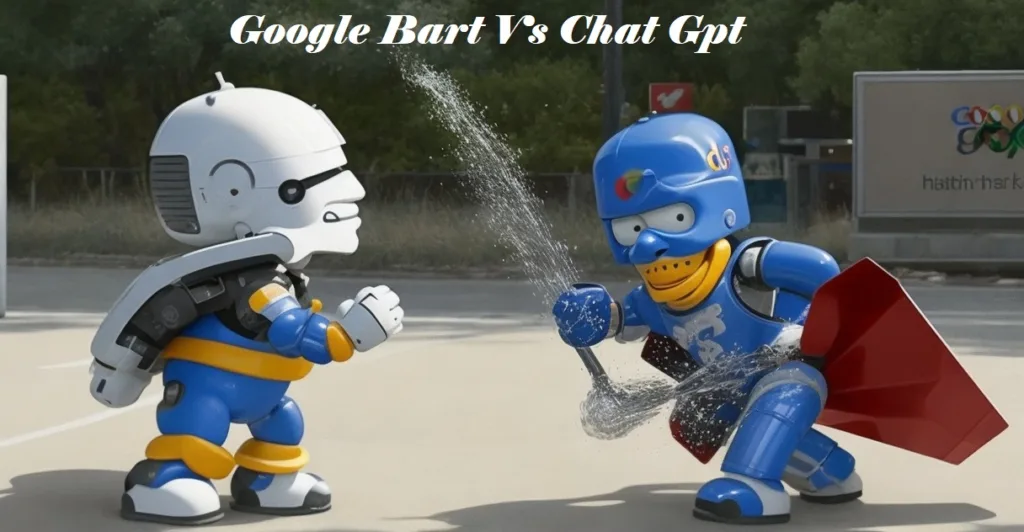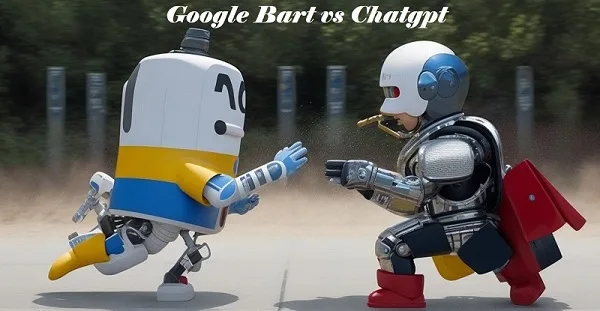Google Bard : Introduction
Google Bard is a large language model (LLM) chatbot developed by Google AI. It is based on the LaMDA family of LLMs and is trained on a massive dataset of text and code. Bard can generate text, translate languages, write different kinds of creative content, and answer your questions in an informative way. It is still under development, but it has learned to perform many kinds of tasks, including
- Following instructions and completing requests thoughtfully
- Answering questions in a comprehensive and informative way, even if they are open ended, challenging, or strange
- Generating different creative text formats of text content, like poems, code, scripts, musical pieces, email, letters, etc.

Alternatives to ChatGPT
ChatGPT is another popular LLM chatbot developed by OpenAI. It is also trained on a massive dataset of text and code, but it uses a different architecture than Bard. ChatGPT is known for its ability to generate creative and engaging text formats, while Bard is known for its ability to answer questions accurately and informatively.
ChatGPT vs. Google Bard: Pros and Cons
Here is a table comparing the pros and cons of ChatGPT and Google Bard:
| Feature | ChatGPT | Google Bard |
|---|---|---|
| Pros | Can generate creative and engaging text formats | Can answer questions accurately and informatively |
| Cons | Can be less accurate than Google Bard | Can be less creative than ChatGPT |
| Availability | Open-source | Closed-source |
In the realm of artificial intelligence, Google BART (Bidirectional and Auto-Regressive Transformers) stands as a pinnacle of innovation, reshaping the way we perceive and interact with technology. This article delves deeper into the intricacies of Google BART’s functionality, unraveling the layers of its capabilities and shedding light on its profound impact on text generation.
Google Bart: Unveiling the Functionality of Google BART:
At its core, Google BART is designed to comprehend, interpret, and generate human-like text with a level of nuance and coherence that sets it apart. Its distinctive functionality stems from its dual approach—bidirectional training and auto-regressive generation—leading to a harmonious fusion of context and creativity.
- Bidirectional Training: Unlike traditional models that consider only the preceding context, BART embraces bidirectional training. It delves into both the preceding and following words, allowing it to grasp a holistic understanding of context. This bidirectional approach empowers BART to identify nuanced relationships between words, phrases, and ideas, contributing to a deeper comprehension of text.
- Auto-Regressive Generation: BART’s auto-regressive training comes into play when generating text. This technique involves predicting each word in a sequence based on the preceding words. It ensures that the generated output maintains coherence and context, mimicking human-like writing styles and expressions.
Versatile Applications:
The versatility of Google BART’s functionality is a testament to its adaptability across a range of applications:
- Content Generation: BART can craft engaging articles, creative pieces, and marketing content, aligning with the specific style and tone desired by the user.
- Summarization: The model excels at extracting key information from lengthy texts, generating concise and coherent summaries that capture the essence of the original content.
- Language Translation: BART’s bidirectional approach enhances its accuracy in translating text across languages. By considering the context of both source and target languages, it produces translations that feel more natural and contextually appropriate.
- Text Completion and Expansion: BART can be used to suggest word completions or expand on existing sentences, aiding writers in overcoming creative blocks and refining their content.
- Conversational AI: While its primary strength lies in text generation, BART can be integrated into conversational AI systems to craft responses that maintain context and carry forward the conversation naturally.
Incorporating Contextual Nuances:
One of the standout features of Google BART’s functionality is its ability to capture and incorporate contextual nuances:
- Understanding Context Shifts: BART’s bidirectional training equips it to navigate context shifts within a text, ensuring its generated output remains coherent even when subject matters change.
- Maintaining Consistency: When generating longer text sequences, BART’s auto-regressive approach ensures consistency in tone, style, and context, delivering a seamless reading experience.
The Ongoing Evolution:
As AI technology continues to evolve, Google BART serves as a stepping stone toward even more sophisticated and nuanced text generation models. Its underlying architecture emphasizes context, coherence, and adaptability—qualities that will undoubtedly shape the future of AI-generated content across various domains.
Countries where Google Bard is Available
Google Bard is currently available in the following countries:
- United States
- Canada
- United Kingdom
- Australia
- New Zealand
- India
- Singapore
- Japan
- South Korea
- France
- Germany
Google Bard Sign Up Link
You can sign up for the waitlist to access Google Bard on the Google AI website: https://bard.google.com/
5 FAQs about Google Bard
- What is the difference between Google Bard and ChatGPT?
Google Bard and ChatGPT are both large language models (LLMs) that can generate text, translate languages, and answer questions. However, they have different strengths and weaknesses. Google Bard is better at answering questions accurately and informatively, while ChatGPT is better at generating creative and engaging text formats.
- Is Google Bard open source?
No, Google Bard is not open source. It is a closed-source product that is only available to a limited number of users.
- How can I access Google Bard?
You can sign up for the waitlist to access Google Bard on the Google AI website: https://bard.google.com/
- What are the limitations of Google Bard?
Google Bard is still under development, so it has some limitations. For example, it can sometimes be inaccurate or generate text that is not factually correct.
- What are the potential applications of Google Bard?
Google Bard has the potential to be used in a variety of applications, including:
- Virtual assistants
- Education
- Healthcare
- Customer service
- Research
family vacation us virgin islands


[…] and engage with users in a way that feels natural. This makes it perfect for customer service, virtual assistants, and […]